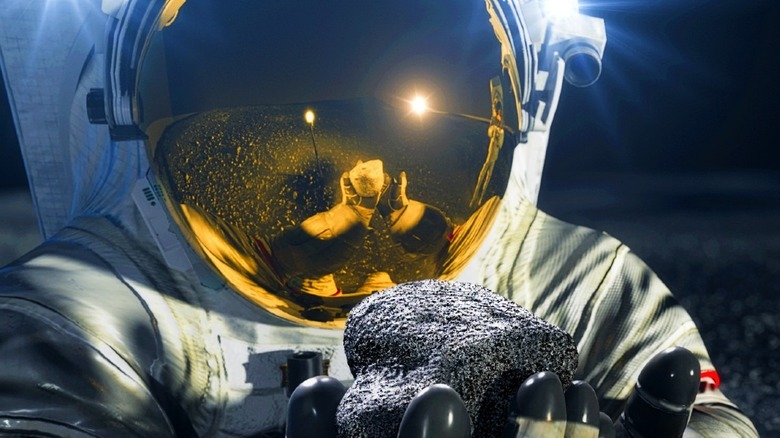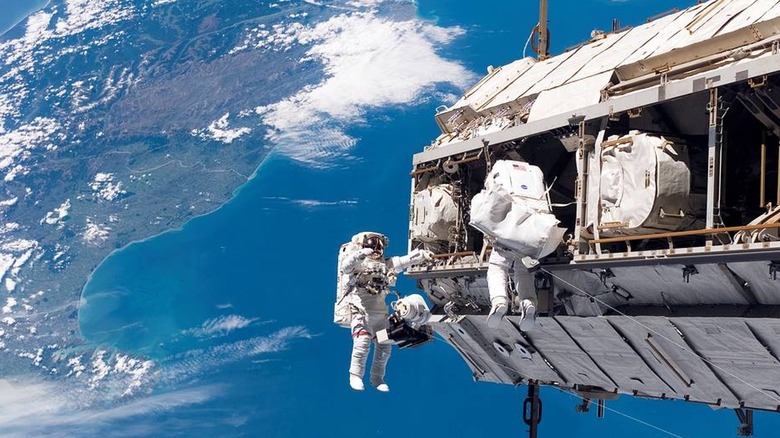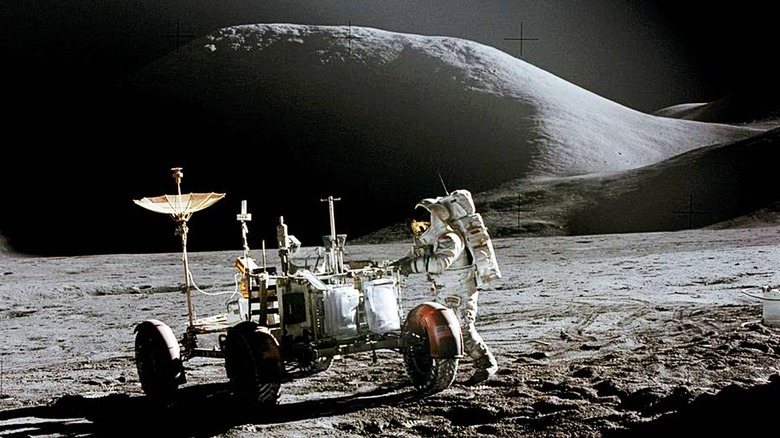NASA's Artemis Astronauts Just Found Their New Tailors
NASA's spacesuits have had some rough long months. In August 2021, a report from the space agency's Office of Inspector General warned that spacesuits for the moon would cost $1 billion. The suits were so backlogged that they could delay the landing on the moon until 2025. But the spacesuit ordeals for NASA did not end there. Recently, on May 17, NASA was forced to suspend all International Space Station (ISS) spacewalks after water was found in the spacesuit helmet of ESA astronaut Matthias Maurer, Space reports.
Now, finally, NASA seems to have some good spacesuit news. On June 1, NASA communicated they had selected Axiom Space and Collins Aerospace to develop the next generation of spacesuits and spacewalk systems. The spacesuits will be used outside of the ISS, on the Artemis moon mission, and even in preparations for the missions to Mars, NASA said. Axiom and Collins Space were awarded the spacesuit development through solicitation for NASA's Exploration Extravehicular Activity Services (xEVAS) contract. The contract has a potential value of $3.5 billion for all orders and calls for spacesuits to be used until 2034.
The challenges of building a spacesuit
During missions up to and including Apollo, NASA spacesuits were custom made for each astronaut. However, during the Space Shuttle program — which included hundreds of astronauts — plug-and-play spacesuit components were designed. These hands, torso, legs, and helmet modules came in different sizes to adapt to all astronaut shapes and sizes. According to Texas A&M's Bonnie Dunbar, plug-and-play suits received some heavy criticism for their lack of flexibility and discomfort. Axiom Space said that the new suits will be designed for a wide range of crew members but did not reveal if they would be modular or one-off pieces.
"The Axiom spacesuits are created to provide increased flexibility and specialized tools to accomplish exploration needs and expand scientific opportunities in space," the company says. The suits will also include life support, pressure garments, and avionics. The awarding of the spacesuit contract to Axiom can be considered a logical next step in NASA's immediate low-earth-orbit future.
Axiom Space recently installed its headquarters at the Houston Spaceport. From there they will construct, and eventually deploy, the modules for the first private space station: the Axiom space station. The first modules of the Axiom station will attach to the ISS, to later detach and expand, and consolidate the space station that will replace the ISS.
What must the new spacesuits do on the moon?
The 100-page-long System Requirements document of the NASA xEVAS contract gives an exhaustive technical overview of what NASA expects from the new spacesuits. NASA says the suits must be designed to execute all the tasks astronauts will do on the surface of the moon, and throughout the journey. Astronauts will not only use their spacesuits for maintenance and exploring unseen regions. The suits must function appropriately and facilitate all the scientific objectives and activities of the mission. Astronauts will, among other things, take photographs, use sampling tools, and load and deploy equipment, in full gear.
Another major challenge for spacesuits is lunar dust. The spacesuits must limit the amount of regolith — lunar dust and sand — that gets inside the suit, the landers or base, and vehicles. Regolith can cause failures of filtration systems and other critical equipment. Lunar sand tends to stick on everything because it is electrostatically charged by the solar wind. It was a nightmare for Apollo astronauts as it affected the lunar rover and other equipment.
The new spacesuits must also protect astronauts from micrometeoroid and orbital debris impact and penetration. Astronauts will be living and working in the south pole of the moon which is permanently in the shadows, so light and controlled temperature is also key. Finally, these new spacesuits are required to have all outlined communications and navigation systems and must provide a fully habitable environment for the astronaut for eight or more hours.


